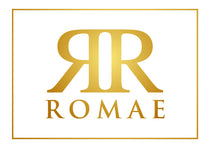Aesop's Fables Crow Medallion
In Aesop’s classic fable "The Crow and the Pitcher," a thirsty Crow came upon a tall pitcher with water at the bottom, one day, though the water was too low for her beak to reach. Rather than giving up, she thought carefully and began dropping small pebbles into the pitcher, one by one. Slowly, the water level rose, until at last she could drink her fill. Through patience, cleverness, and careful planning, the Crow solved a problem that might have seemed impossible at first. This clever tale reminds us that clever thinking, patience, and resourcefulness can help us overcome even difficult challenges. Our medallion captures the story’s charm and wisdom, as well as its important message: The back features the Greek word ΕΦΕΥΡΕΤΙΚΟΤΗΤΑ, meaning "the quality of being inventive or resourceful," which is the essence of the moral of Aesop's tale.
Our medallion is based on an ancient Roman coin likely from an Italian mint. The coin is a semis of the emperor Domitian (r. AD 81 - 96), and was probably minted in the year AD 85. The obverse or front of the coin features the head of Apollo, Greek god of the sun, hunting, prophecy, arts and music, and so much more. The back or reverse of the coin shows a crow standing on a branch facing the viewer's right, with the abbreviation SC in the exergue, or the small space below the principal emblem on a coin. The abbreviation stands for SENATUS CONSULTUM, or "by decree of the senate."
The crow was thought by the ancient Greeks and Romans to be a prophetic bird, and as such was closely related to the god of prophecy, Apollo. According to Greek myth, Apollo sent a white crow to spy on his lover, Coronis. When the crow brought back the news that Coronis had been unfaithful to him, Apollo scorched the crow in his fury, turning the bird's feathers black. The mythological tale links the bird to vigilance, divine justice, and prophetic insight.
Domitian included Apollo and the crow on his coinage to associate his reign with the traditional Roman religion and to project an image of imperial authority and connection to the divine. Apollo represented an ideal of wisdom and artistic achievement, aligning with Domitian's patronage of the arts and his desire to present himself as a divinely favored ruler in line with established imperial traditions. The crow is a symbol of Apollo, further reinforcing the connection and promoting a message of legitimacy and connection to the gods throughout the empire
Our medallion may be worn as a necklace or as a bracelet. It comes with a 22" brown leather cord, as well as your choice of a children's or adult's translated version of a book of Aesop's Fables.







